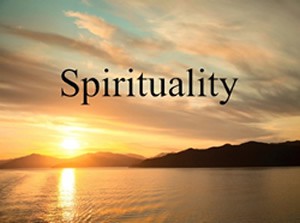Objectives:
- Explore the psychological and emotional curiosity for and impact of horror art on individuals and society
- Analyze the unique aesthetic qualities of horror art
- Understand and utilize some basic principles of film and television analysis
Original Post:
Some people do not know why I really like the horror movies. Why is the horror movies interested a lot of people? I think the reason is unlike most of the love movies, I can guess what will happen and what the end of the story is; but you will never know what will happen in the next second in the horror movies. The horror movies do not like other movies that have an approach from beginning to the end. The reason that the horror movies are different from the others is because it is easy to make the unreal story real. Just like what Carroll said in his article “the pleasure derived from the horror fiction and the source of our interest in it resides, first and foremost, in the processes of discovery, proof, and confirmation that horror fiction often employ”(Carroll P277). Base on his opinion, he believes that the process of looking for horror moment is the most attractive part for us.
In Anthony’s article “Why do we watch horror films”? He says “Some people want to watch something that addresses their archetypal fears, while others just want to go along for the psychological ride.” In his article, he first tells us what the basic of horror is. “We put ourselves in situations to be scared because we want to understand what our population fears as a whole, according Paul J. Patterson, PhD, an assistant professor of English and co-director of Medieval, Renaissance, and Reformation Studies at Saint Joseph’s University.” Then he tells us the reason that people like to watch the horror films. Base on his articles, he believes that people like the horror movies is because horror films gives viewers a psychological ride. “In the real world, people simultaneously can experience happiness and sadness, exhilaration and anxiety…people enjoy excitement, even if it’s from a negative source, otherwise, things could be pretty dull…People who seek higher levels of arousal thoroughly enjoy the response — heightened feelings of awareness — their bodies have to intense experiences.” I really agree with the point he mention. In our lives, most of people never see a serial killer or something scared them and people are not familiar with fear. This is the best point that the horror movies create. I think we should not only enjoy the feeling that we can enjoy in our daily life but also some higher level of arousal thoroughly. High sensation-seekers enjoy levels of arousal higher than that of low sensation-seekers. This is typically caused by two things: testosterone and the body’s response to the neurotransmitter dopamine. There is a horror movie “paranormal activity”, which talk about some scared events happened around people who live in a house. This movie is famous, because the place in the movie is just like where we live and we are familiar with it. Some things happen around people without any reason will scare people and this is what we want when we are watching the horror movies.
Another thing he points out in his article is the way to overcome the fear of the horror films. “By understanding that the films are acted out, and that all of the blood, guts, and gore are only special effects, you might be able to enjoy them a bit more. No one’s arm is being sawed off. It is a special effect. People are not being maimed. These are actors.” This is a good way to help those people who are not enjoying in the horror movies to start to look at it. People should believe all the things that happen in the film is not true and all of these things are act by actors. Then people will not pay too much attention on those scared things and really enjoy the horror films.

Reflection:
In this week’s assignment I learned the meaning of several terms related to horror movie, such as “non-diegetic sound, diegetic sound, and mise-en-scene”. I also learn several ways can enhance the dramatic effects of a certain scene. For example, Buffy episode, when the girl gets her voice back and screams very loud and long. During this part, the girl’s voice break up all the monsters and just like a voice of victory(Buff Episode). This example told me about what is diegetic sound, it is the voice of the character herself and the sound source can be seen on the screen. During the time when I was doing the research of horror, I understand the reason why I enjoy watching horror movies. According to Carroll’s article, “The impossible being does disgust; but that disgust is part of an overall narrative address which is not only pleasurable, but whose potential pleasure depends on the confirmation of the existence of the monster as a being that violates, defies, or problematizes standing cultural classifications. Thus, we are attracted to and many of us seek out, horror fictions of this sort despite the fact that they provoke disgust” (284). Everyone want to find some exciting thing to do and people will feel excited when they are watching horror movies.
Like what I said in my post, people love horror movie is because people enjoy being scared in a controlled situation. Also, people may feel curious about something that never happen in the real world and they would like to have a similar experience through movie. That is why horror movies are so popular.
Future:
In the future, I think I will use what I learn in class to analyze the film, such as to discuss the use of “non-diegetic sound, diegetic sound, and mise-en-scene” and how they enhance the dramatic effects of the film. During the horror film, I will not only enjoy the horror but also try to understand why the horror film make people sacred and think about if there is a better way for the director to express their feeling about horror.
Anthony, R. (2013. Oct 22). Why do we watch horror films? Medical Daily.Retrieved from http://www.medicaldaily.com/why-do-we-watch-horror-films-some-want-understand-archetypal-fears-while-others-crave-psychological
Carroll, N. (2002). Why Horror?. In Neill, A. & Riley, A. (eds.) Arguing About Art: Contemporary Philosophical Debates (2nd ed., Chap. 17). New York, NY: Routledge.






